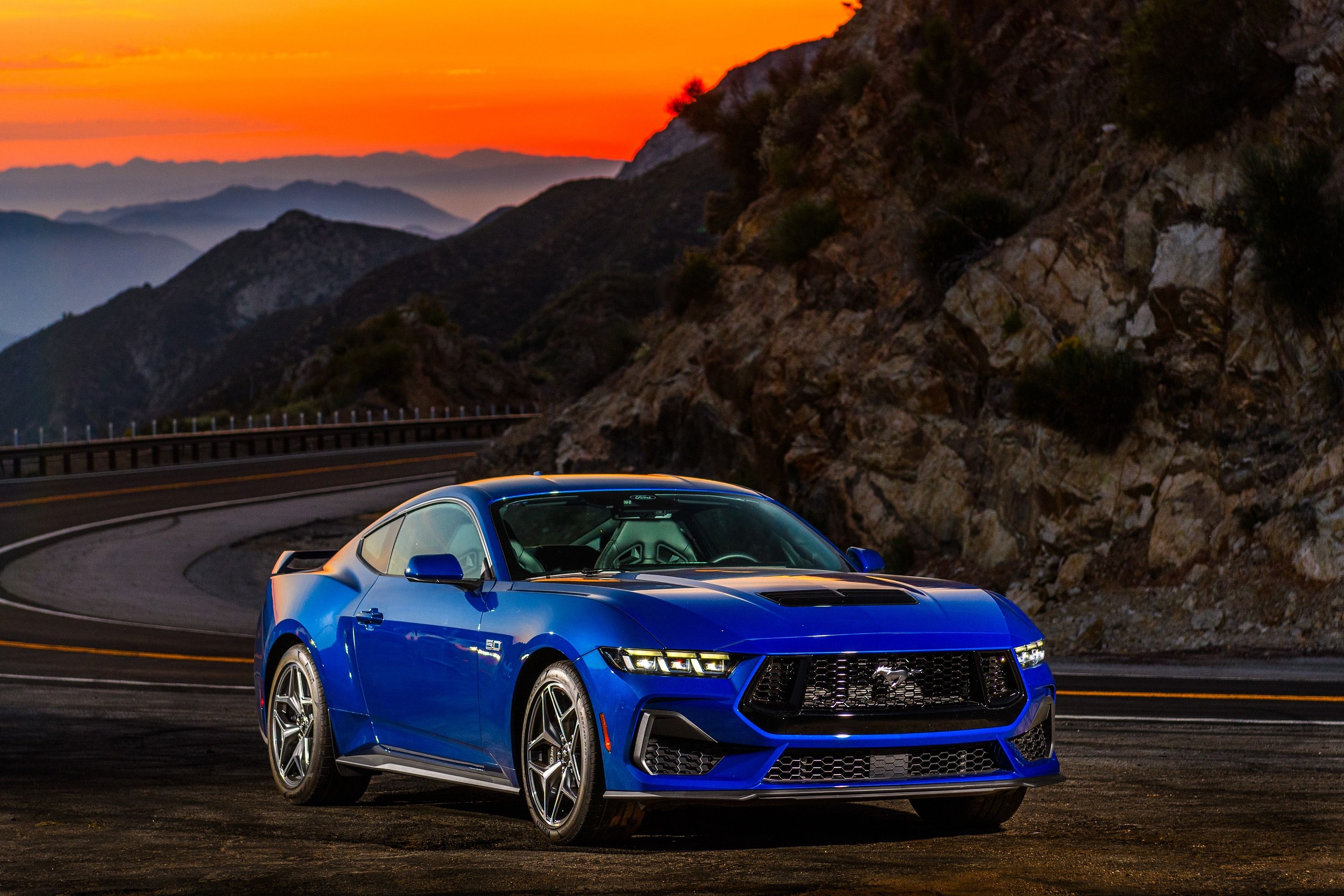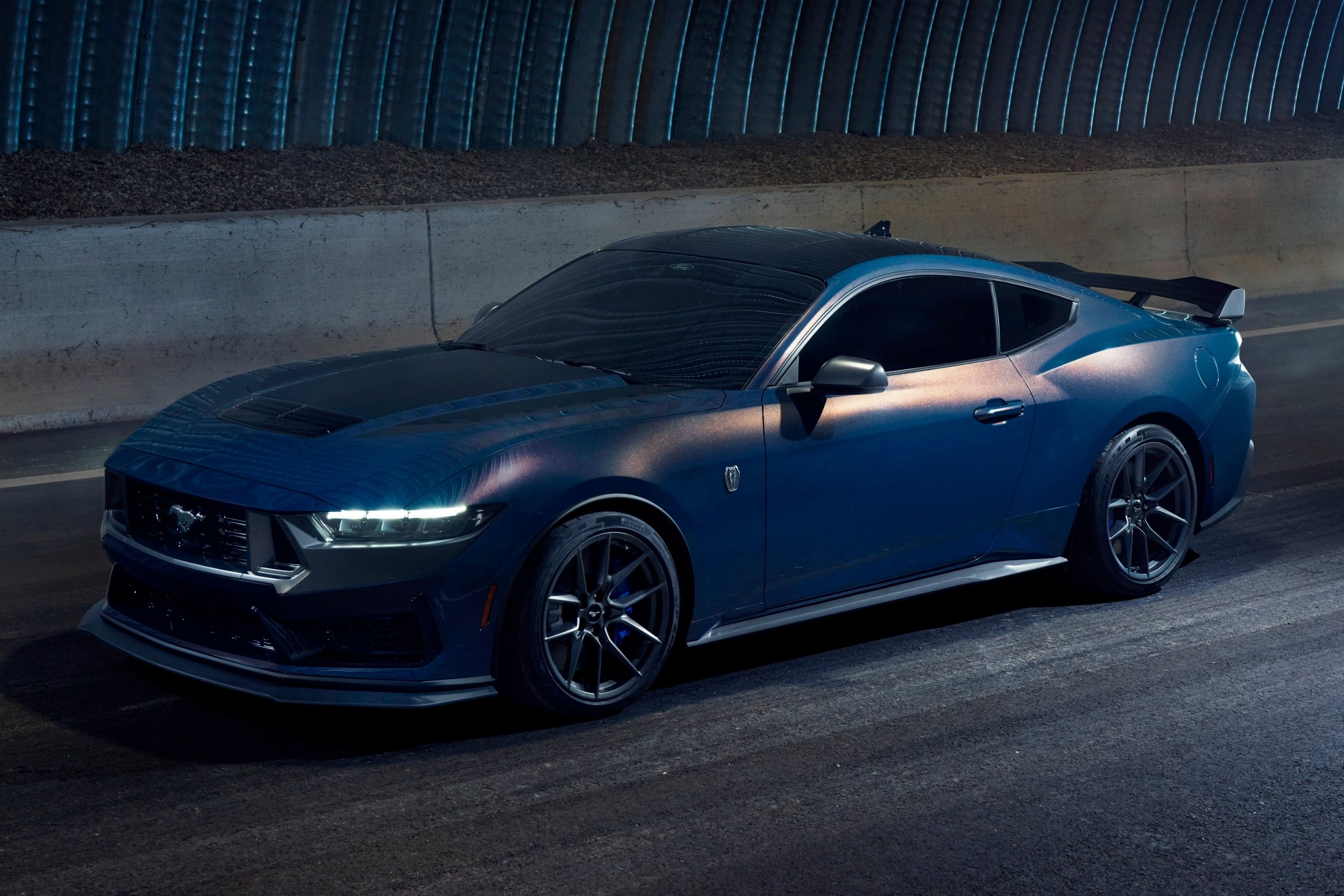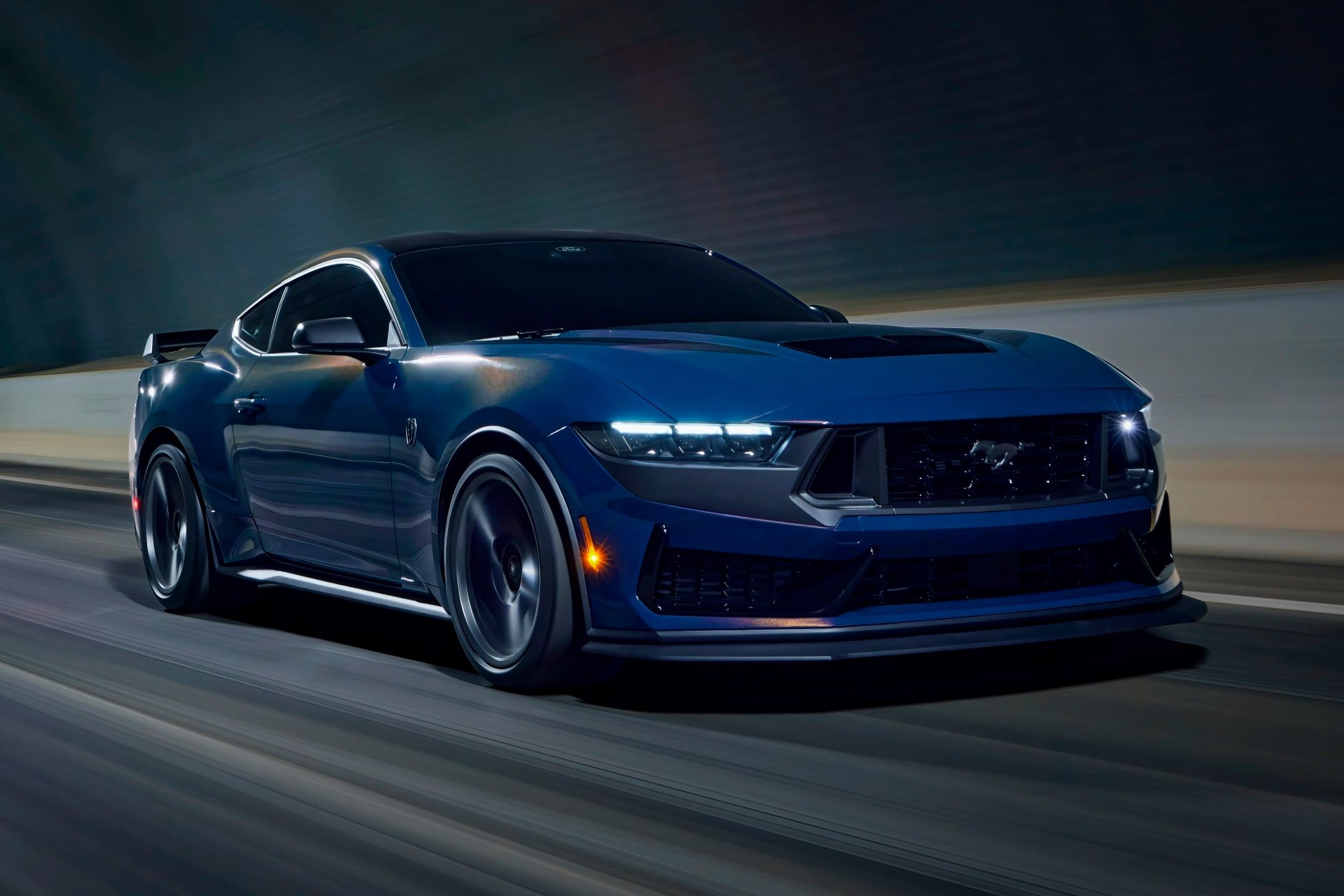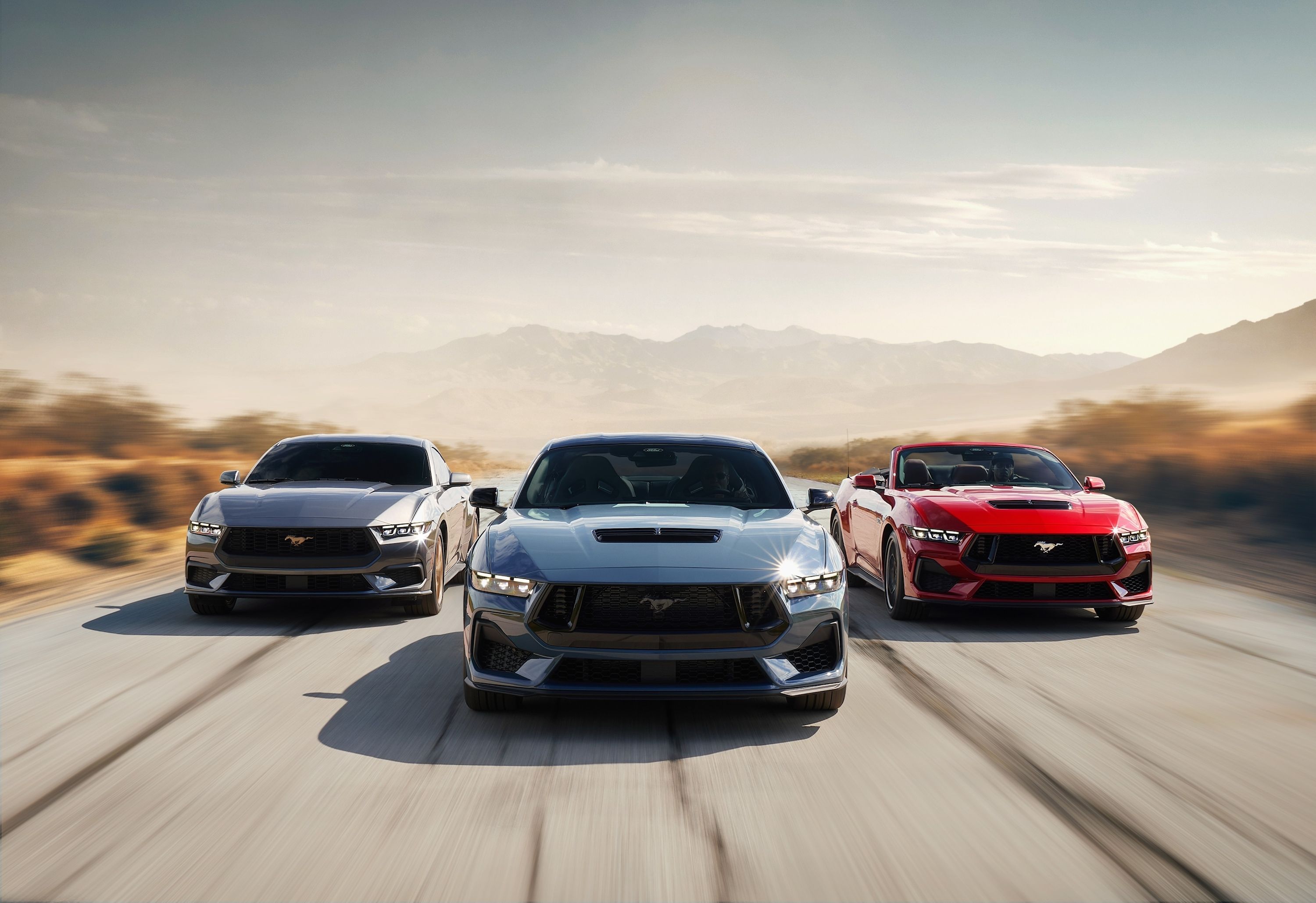
This week saw the unveiling of the 2024 Ford Mustang, revealing edgy new looks, a lot more tech, and "all-new" V8 and EcoBoost engines. If you feel a little underwhelmed by the Mustang, you're not the only one. The overall shape of the pony car looks almost identical to that of its predecessor, and the engines on offer have not yet revealed their power outputs or how they can make the claim of being all-new. In fact, some might call this a heavy refresh rather than an all-new Mustang, but is it? Let's take a look at what we know so far.
We start with the platform. The Blue Oval claims that the chassis has been revised and improved for increased stiffness, but the wheelbase of the new S650 Ford Mustang is identical to that of the S550 that came before it. The basic design of the suspension is also carried over, although Ford claims improvements have been made here too. Inside, where two huge digital screens now dominate your view, more comparisons can be drawn to the old 'Stang. The door handles and pulls are carried over, as is the center armrest, which sits above a familiar-looking transmission tunnel. At face value, the new Mustang is simply a refreshed version of the old one with some new digital display screens and additional USB ports on the roof, but what about the engines?
"New Mustang has two new engines - a 2.3-liter EcoBoost and the Mustang GT's most powerful 5.0-liter Coyote V8 ever," reads the press material. The blurb tells us that this V8 is the most powerful naturally aspirated iteration yet, but only tells us that the fourth-gen Coyote includes "an innovative dual air intake box and dual-throttle body design that helps minimize induction loss." We know that it will produce more than 480 horsepower, but not much more. Road & Track reports that Eddie Kahn, vehicle engineering manager for the new Mustang, said, "we're still trying to squeeze as much out of it as we can."
The previous Mustang lends its internals to the regular GT, while the Dark Horse trim, which has a target of around 500 hp, has been upgraded with beefier camshafts. It also gets the forged pistons and connecting rods from the supercharged 5.2-liter Predator V8 found in the GT500. If these components can handle 760 hp, they're more than good enough for something in the region of 500.
Both the regular GT and the Dark Horse are also improved with a new steel oil pan that is claimed to reduce windage losses. The left-side exhaust manifold has been updated for increased flow, while the exhaust camshaft now has a longer duration, or runs hotter, to help evacuate all the extra hot air coming in from twin 80-millimeter throttle bodies. Clearly, the changes in the engine are as few as those made to the chassis. But what about the base engine?
The 2.3-liter turbocharged EcoBoost four-cylinder is much more worthy of the "all-new" claim. "We pretty much overhauled the entire engine," said Kahn. As with the V8, a new dual-fuel system with both port and direct injection has been added. The compression ratio has also been increased from 9.5:1 to 10.6:1, while the twin-scroll turbocharger (a first for the Mustang) now dumps through a new electronic wastegate. Lower emissions are targeted with new air induction and exhaust-gas recirculation systems.
But while the EcoBoost may benefit from a comprehensive refresh, the transmissions are roughly the same as before. The GT gets the same Getrag six-speed manual as before, while the Dark horse gets the Tremec system from the GT350 and later Mach 1 models. The 10-speed automatic carries over from the facelifted Mustang launched in 2018, just with new electronics.
Interestingly, the EcoBoost is only offered with the automatic transmission because S550 buyers hardly specified the manual in conjunction with the turbo motor. Clearly, Ford feels that the recipe of the sixth-gen Mustang is good enough to bake a great seventh-gen cake, but it's still a little disappointing to those who were expecting something truly innovative.
On that note, it seems that cost played a factor in the decision not to pursue a hybrid Mustang yet: "It's important to keep the EcoBoost in the base car to keep things affordable and attainable," said Krenz. "So the question of why not a hybrid or whatever? Affordability. It's very important that it's accessible. It's always been the Mustang way, right?"
While we wish there was more in the way of technical innovation to talk about, at least we know that this platform leaves no room for excuses when fans start to demand high-performance models with more power.



